New perk! Get after it with local recommendations just for you. Discover nearby events, routes out your door, and hidden gems when you sign up for the Local Running Drop.
1989 has been called the year of the “greatest race ever run” in the sport of triathlon. Many a word has been written and stories told about the events that transpired at the Ironman World Championships on October 16 of that year, when pro triathletes Mark Allen and Dave Scott raced side by side at world-record pace for a grueling 139 miles, known as the Iron War forever more.
But a few months before, oceans away from Hawaii’s Big Island, another epic showdown occurred among the fittest triathletes on the planet. Because on August 6, 1989, some 800 of the world’s fittest pro and age-group triathletes from 40 countries descended on Avignon, France, on the banks of the Rhone River, to compete in the very first International Triathlon Union (ITU) World Championship.
At the time, the ITU (now known as World Triathlon) was in its infancy. In April of that year, the first ITU Congress met in Avignon to organize the international governing body for the sport with the overarching goal of having triathlon recognized by the International Olympic Committee (IOC) and making triathlon an Olympic sport. While it would take another 11 years for that goal to come to fruition—at the Sydney games in 2000—the congress was able to act immediately on the decision to host the sport’s first world championship over the Olympic distance (1.5-km swim, 40-km bike, and 10-km run, in a non-drafting format), in just four months time. This move, the ITU Congress decided, would show the IOC that they meant business—and could adhere with the committee’s strict guidelines for sports inclusion.
RELATED: Feature: Looking Back at 40 Years of Professional Triathlon
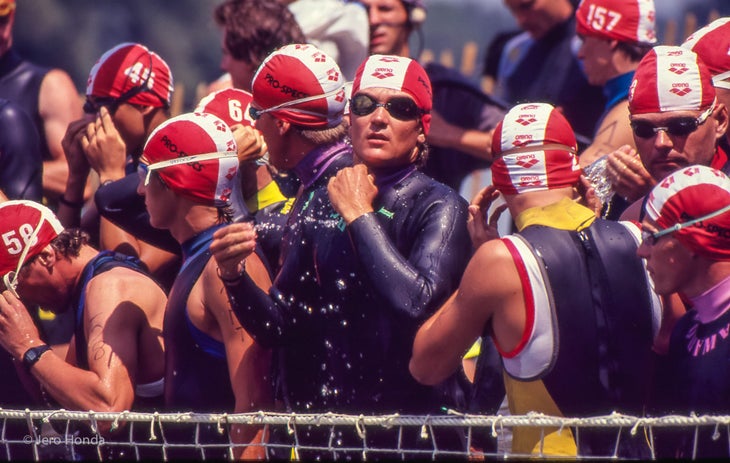
A U.S. Dream Team
Around the world, countries began selecting their teams to compete in Avignon, a town steeped in history (its towering Palais des Papes served as the seat of Catholic popes from 1309 to 1403). In the U.S., several early summer races served as qualifying events for the pros. Jan Ripple, a 34-year-old former All-American swimmer at Louisiana State University and mom of three; Laurie Samuelson, also 34 and an engineer by trade; and Karen Smyers, 27, then at the cusp of her illustrious career, which would later include several world championship titles headlined the American women’s squad.
Mark Allen, then 31 and fresh off a long-distance win in Nice, France, would be the first to qualify for Team U.S.A., while Mike Pigg, 26, the 1987 and 1988 U.S. national champion in the Olympic distance, and Brooks Clark—just 23 and a recent University of Delaware graduate—led the men’s side. In early August, the U.S. squad flew to France, ready to take their shot at winning on the world’s stage, not only individually, but in the team event, as well.
“Something That Would Be Historic”
And Agvignon was certainly ready for them. After all, the town had been hosting the Triathlon d ‘Avignon for four years by then, and the race directors made sure to pull out all the stops for this inaugural world championship event. In a reflection of his race experience, Allen—who won races in Avignon in 1986, 1987, and 1988—recalled heading down to the finish line area several days before the race, where the entire section of street was completely closed off. “The grandstands had already been put in place and the finish line constructed,” he wrote. “Never had I seen that happen in a race before. Just seeing the reverence being given to the upcoming event with the end goal already in place gave it an air of something outstanding about to take place, something that was going to be a first, something that would be historic.”
“Never had I seen that happen in a race before. Just seeing the reverence being given to the upcoming event with the end goal already in place gave it an air of something outstanding about to take place, something that was going to be a first, something that would be historic.”
A Pivotal Moment For Equal Pay
The race wasn’t just historic in that it served as the first ITU World Championship. The event also marked a pivotal moment in gender equity among the pros. Upon discovering the men’s prize purse in Avignon was larger than the women’s, race favorite Erin Baker of New Zealand mounted a campaign for equal pay. In turn, the male athletes refused to race unless the purse was the same.
“Because it was the first official world championships, it just had that bit more credibility about it, it was the one race that everyone was shooting for,” Australia’s Miles Stewart, who was just 18 at the time and would go on to finish fourth, explained . “It wasn’t just the fact it was the ITU World Championships; there was solidarity between the athletes for that equal prize money for women. And that’s where it generated from, from that one race. For such a young sport and such diversity of backgrounds to have everyone on the same page was pretty special.”
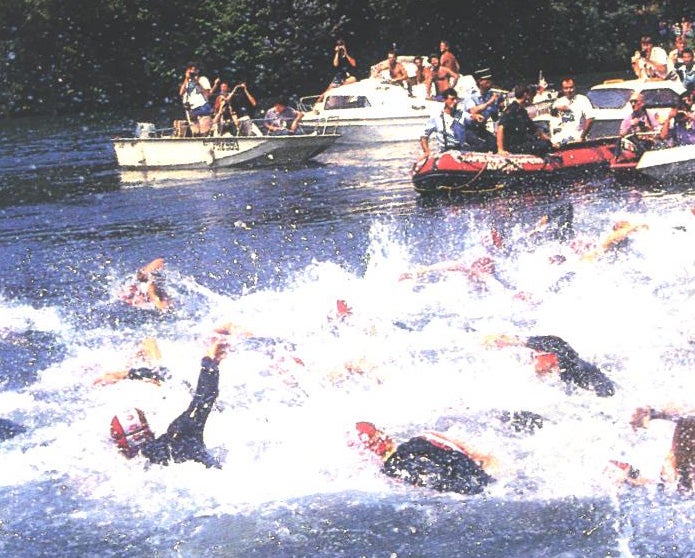
The Favorites Emerge
While Allen had a strong foothold as one of the world’s best Ironman triathletes at the time (and, obviously, would go on to win Kona in 1989 and five more times after that) he arrived to Avignon with a laser-sharp focus on conquering the shorter distance. “I trained specifically for this race,” he said in a pre-race interview. “I cut my miles way back and have done more speedwork, because it’s a sprint-distance triathlon. It’s short, it’s fast, and aggressive.”
Baker, the fleet-footed 28-year-old Kiwi who already had an Ironman World Championship title under her belt, came in equally determined to continue her winning ways. In Avignon, Baker would face a stiff challenge in the likes of the American women, as well as the Puntous twins of Canada, who all had shown they could hang, especially at the shorter distance.

Allen Comes From Behind
The race got off to a somewhat inauspicious start, when race organizers made the odd choice to lengthen the swim to close to 2 kilometers in an attempt to counteract the Rhone’s super-swift current. But soon before the cannon fired, the current slowed, and a headwind picked up, leading to uncharacteristically slow swim (Ireland’s Gareth Mccarthy was the first athlete to emerge from the water in 26:34, some six minutes off his typical Olympic-distance swim split). By the time Allen, the race favorite, mounted his bike and headed out onto the rolling course throughout the pastoral southern France countryside, he had close to two minutes to make up on the leaders.
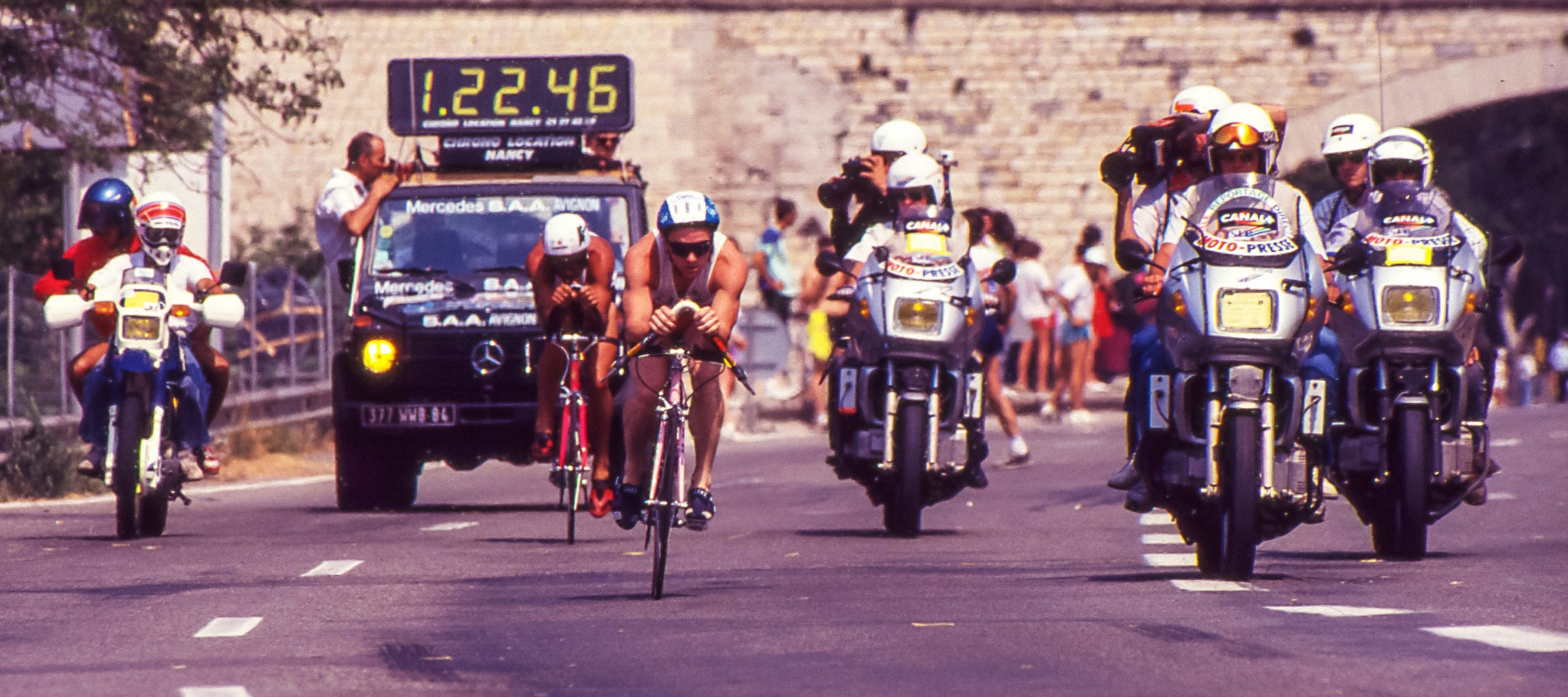
Clad in a bright speedo and a white singlet, Allen remained in the hunt, later saying he was assisted by the hard-charging pace of his compatriot Pigg. (“Just try to follow Mike’s pace on the bike for as long as you can and maybe you will be able to pull back at least some of the time that’s been lost,” he recalled.) When the men moved onto the run, Allen had cut his deficit to leader Rick Wells of New Zealand down to 40 seconds—as he steadily and methodically made his way to the pointy end of the field in 90-degree F heat. With some 4K to go, Allen took the lead and extended it to over a minute, ultimately turning in a 33:07 10K split—and one of the finest finishes of his career; his Kona wins notwithstanding.
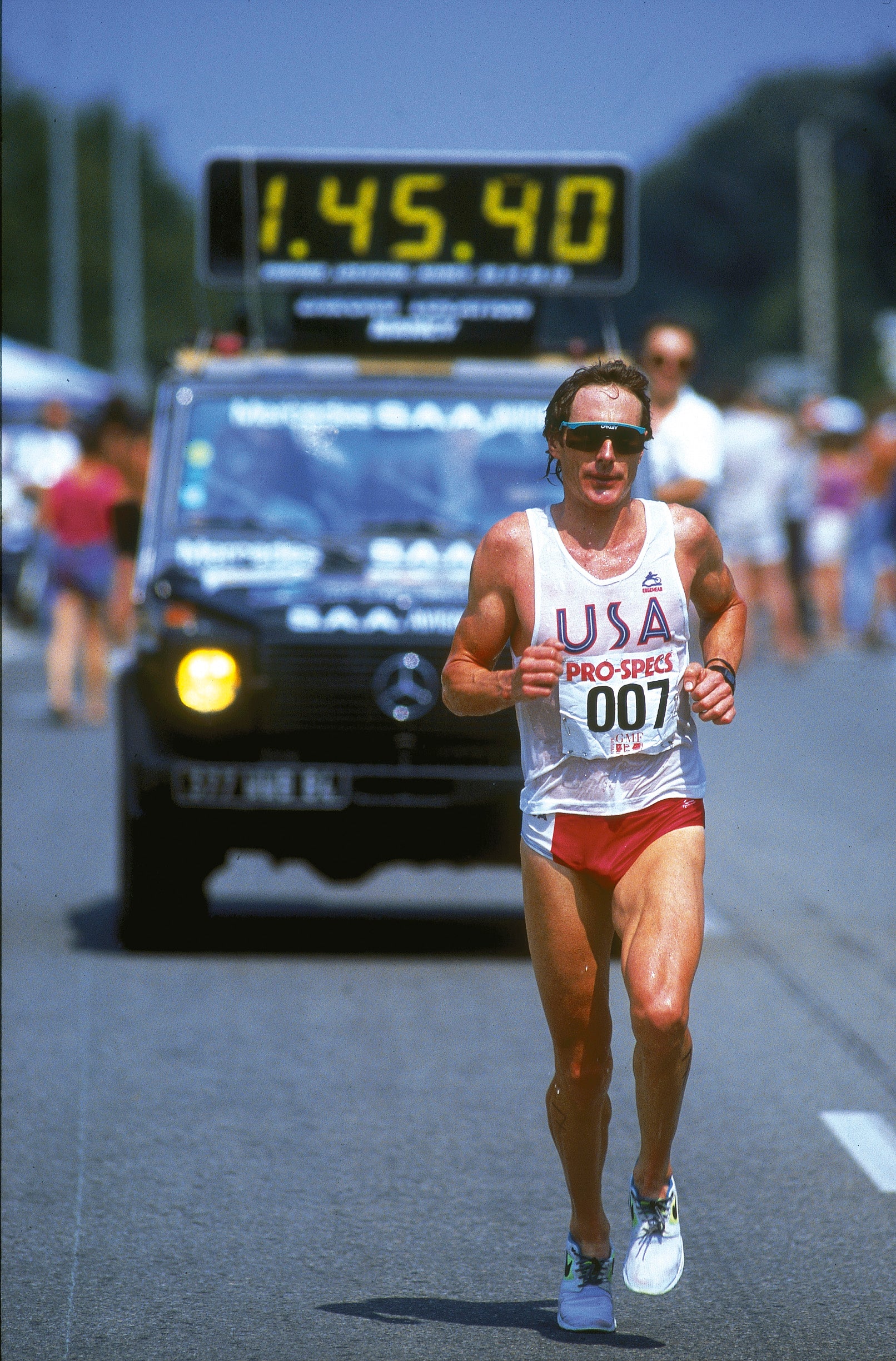 (Photo: International Triathlon Union)
(Photo: International Triathlon Union)“We all stood silent as the American national anthem was played,” Allen said of the awards ceremony at Palais des Papes. “It was a first for me to be a part of an event that represented not only me but also the possibility for the future of the sport.

Ripple and Baker Battle
Meanwhile, in the women’s race, Ripple, who emerged second out of the water, held her own with Baker when the Kiwi caught up to her on the bike. The two exchanged the lead a few times over the course of the bike ride and worked together to elongate their lead on the chase pack, a circumstance that Baker later admitted surprised her. “I remember thinking, ‘Why in the hell is she still riding the bike with me?,’” Baker said.
But would Ripple be able to outrun Baker, who boasted a 2:35 marathon PR and Olympic-level 10K road-racing times?
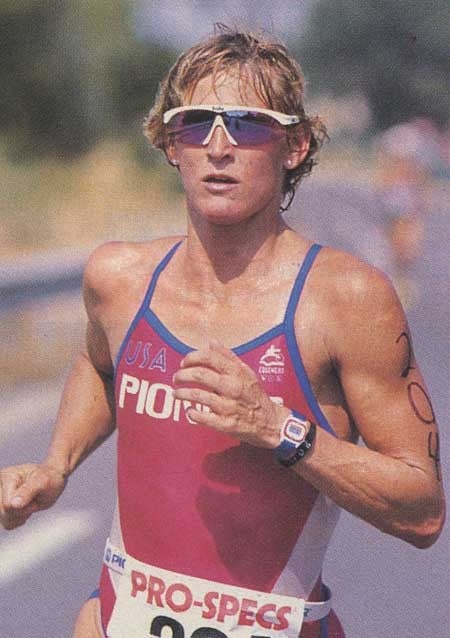
She sure tried, even scaring Baker for a bit on the run. (“She ran a few kilometers with me and I thought, ‘What are you doing here, girl? You shouldn’t be here with me!’” Baker recalled.) Clocking a 38:05 10K split, Ripple wound up finishing 33 seconds back from Baker, who secured one of her many career victories. In a banner day for the American women, Samuelson finished third and Smyers fourth, sealing a team victory for the U.S. (With Pigg finishing seventh and Clark coming in at 11th, the men also took home the coveted team title.)
A Lasting Impact
What began as a way to legitimize triathlon as a force in the sporting arena has persisted to this day, with dozens more athletes crowned world champions, countries showcased, and dreams realized over the past three decades. The vision hatched in Avignon in 1989 ultimately shaped the sport and served as a launch pad for hundreds of future Olympians—all while maintaining a still-unique standard of equal pay between men and women.
“It felt like a huge leap forward for our sport. All of us were just thrilled to death and proud to represent our country for the first world championships,” Ripple recalled of the event. “It really felt like we were a truly legitimate sport.”
